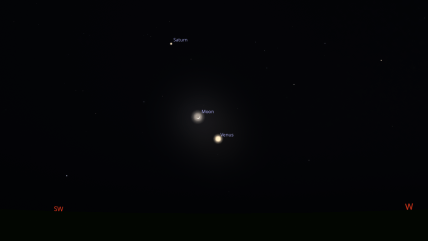What to observe in the night sky in January 2025: key astronomical events.
While January may not feature grand astronomical events like the Geminid meteor shower, space still has surprises in store for astronomers. At the beginning of January, you can catch sight of Venus, Saturn, Mars, and the Moon in intriguing alignments.
The schedule is published by Space.com. On January 3, it's recommended to look to the southwest at any time after dark. The waxing crescent will be visible on January 3, close to Venus — which will also be illuminated — and Saturn will be nearby.
On January 4, after sunset, Saturn will be occulted by the Moon. This event will last for several hours after sunset in the southwest.

On January 13-14, after sunset, the full Moon will nearly cover Mars. Mars will appear large and bright, making it an interesting observation, but the full Moon will obscure it for over an hour.
Moon Phases in January
At the start of the year, the Moon will transition into its waxing phase, culminating in a full moon on January 14. The next waxing phase of the Moon is expected at the end of January, starting on the 30th.
Earlier, "Telegraf" reported on a festive image from NASA. In space, a star cluster was photographed, known as the "Christmas tree."